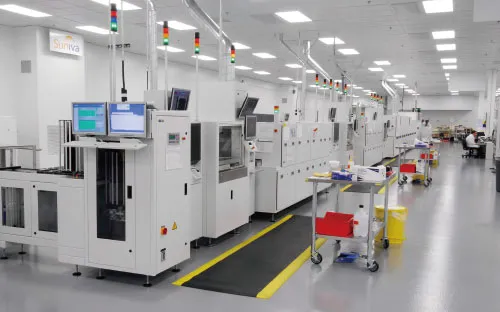With the rapid development of technology, the machine tool industry is undergoing a profound transformation from traditional manufacturing to intelligent manufacturing. In this transformation process, the embedded industrial computer solution for industrial automation has become a new engine for promoting the intelligent development of the machine tool industry due to its high efficiency, stability, and flexibility. The following will elaborate on the content of this plan, including its definition, characteristics, application scenarios, and design and development process.
一、 Definition and Characteristics
Embedded industrial control computer refers to the combination of computer technology and traditional industrial control equipment, which achieves specific control functions through chips such as microprocessors or microcontrollers. This type of system usually has the characteristics of high efficiency, low power consumption, and good stability, and is an indispensable part of modern industrial automation.
1. High efficiency: Embedded industrial control computers use dedicated chips or modules for data processing and control operations, which are usually integrated on specially designed motherboards and can quickly respond to and execute complex tasks.
2. Low power consumption: Due to its compact and efficient design, embedded industrial computers consume less power during operation, which helps to reduce production costs and energy consumption.
3. Good stability: Embedded industrial control computers usually use real-time operating systems (RTOS) or non real time operating systems to ensure accurate and error free execution of tasks with strict time requirements. Meanwhile, its hardware and software design have undergone rigorous testing to ensure stable operation in various harsh industrial environments.
二、 Application scenarios
In the machine tool industry, embedded industrial control computers are widely used in various automation control scenarios, such as:
1. Production line monitoring: By monitoring the working status and production data of each machine tool on the production line in real time, abnormal situations can be detected and dealt with in a timely manner to ensure the continuous and stable operation of the production line.
2. Quality control: Use embedded industrial computers to conduct quality inspections on the parts processed by machine tools to ensure that product quality meets standards. Meanwhile, through data analysis, production parameters can be continuously optimized to improve product quality and production efficiency.
3. Equipment maintenance: Embedded industrial control computers can monitor the operating status and wear of machine tools in real time, predict equipment failures and perform maintenance in advance, reduce equipment failure rates, and extend equipment service life.

三、 Design and Development Process
Designing an effective and efficient embedded industrial control system requires following the following steps:
1. Requirement analysis: Conduct detailed research on the project to determine the required performance indicators and functional requirements. This includes understanding the workflow, production environment, and operational requirements of the machine tool.
2. System architecture design: Decompose the overall goal into various sub modules and define how they work together. This includes hardware architecture design, software architecture design, and communication protocol design.
3. Hardware selection and configuration: Consider cost-effectiveness factors for optimal configuration while meeting performance requirements. Hardware includes processors, memory, input/output interfaces, etc.
4. Software development: Write operating systems and applications according to requirements. The operating system can choose a real-time operating system



